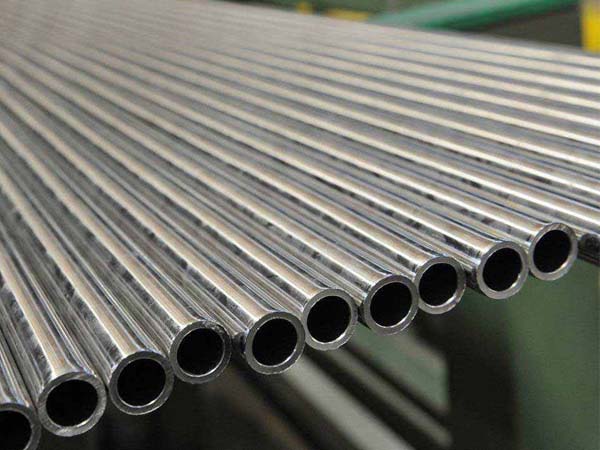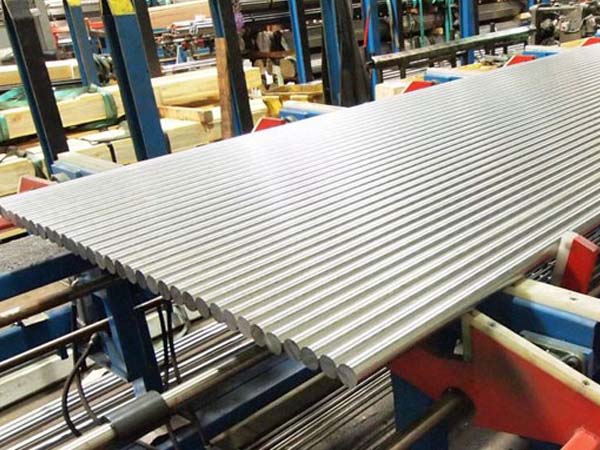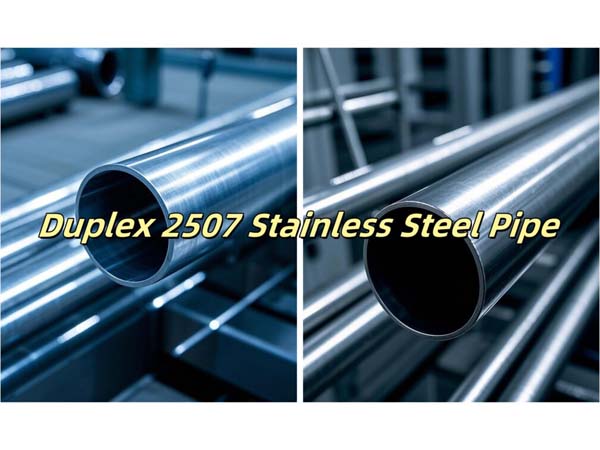





Phone
+86-731-82250427
Address
25th floor, C3 Building, Wanda Plaza, Kaifu District, Changsha, Hunan Province, China.
 Feb 26 2024
Feb 26 2024UNS N06022 (also known as Alloy C-22, W.Nr. 2.46022, Hastelloy® C-22) is an advanced corrosion-resistant alloy with a fully austenitic structure. This alloy provides excellent resistance to both aqueous corrosion and high-temperature attack, including general corrosion, pitting, crevice corrosion, intergranular attack, and stress corrosion cracking. Hastelloy C-22 typically consists of approximately 22% chromium, 14% molybdenum, and 3% tungsten. The high chromium content of the alloy contributes to its resistance against corrosion by oxidizing media. Additionally, the presence of molybdenum and tungsten provides the alloy with resistance to corrosion by reducing media.
Chemical Processing: Chemical reactors, vessels, and piping systems
Petrochemical Processing: Heat exchangers and distillation columns
Pollution Control: Scrubbers, absorbers, and exhaust systems where high levels of corrosive gases are present
Pharmaceutical and Biotechnology: Mixers, and storage vessels where chemical resistance and product purity are critical.
Waste Treatment: Handling and processing systems for aggressive chemicals, acidic waste streams, and corrosive gases
Pulp and Paper Industry: Digester and bleach plant equipment
|
Material |
Ni |
Cr |
Mo |
Fe |
W |
Co |
V |
C |
|
N06022 |
Balance |
20.0-22.5 |
12.5-14.5 |
2.00-4.00 |
2.50-3.50 |
2.50max |
0.35max |
0.015max |
|
Material |
Tensile strength |
Yield strength 0,2 |
Elongation |
Hardness HB30 |
|
800N/mm² |
407N/mm² |
57% |
93-95HB |
One of the primary characteristics of Hastelloy C-22 is its exceptional resistance to a wide variety of corrosive substances. It exhibits resistance to both oxidizing acids and reducing acids, including sulfuric acid and hydrochloric acid. The alloy also demonstrates high resistance to other corrosive chemicals such as oxidizing acid chlorides, wet chlorine, formic acid, acetic acid, ferric chloride, cupric chloride, seawater, brines, and numerous mixed or contaminated chemical solutions, whether organic or inorganic.
The usual practice for Hastelloy C-22 involves subjecting it to a solution annealing heat treatment. This heat treatment is typically carried out following welding or forming processes. Its purpose is to eliminate any sensitization or carbide precipitation that may have occurred during these operations and to enhance the mechanical properties and corrosion resistance of the alloy. The heat treatment process for Hastelloy C-22 entails heating the material to a precise temperature range, maintaining it at that temperature for a specified duration, and subsequently cooling it. It is worth noting that the exact temperature, duration of soaking, and cooling method employed may vary depending on the specific requirements.
In the treatment of Hastelloy C-22, heating is a commonly employed process to attain specific temperature ranges for subsequent procedures such as welding, hot forming, or stress relieving. This heating step serves to enhance material ductility, reduce residual stresses, and facilitate further fabrication. Various methods, including resistance heating, induction heating, or furnace heating, are typically utilized to achieve the desired temperature for Hastelloy C-22. It is crucial to ensure uniform heating to prevent thermal gradients and potential distortion.
Pickling is a chemical process commonly carried out after welding, hot forming, or when the surface of Hastelloy C-22 becomes contaminated. Its purpose is to eliminate surface contaminants, scale, and oxide layers from the material. Pickling involves immersing the alloy in an acid solution that dissolves the undesired layers. Commonly used acids for pickling Hastelloy C-22 include a mixture of nitric and hydrofluoric acids or a mixture of nitric and hydrochloric acids. The duration of immersion depends on the severity of surface contaminants and the desired level of cleaning.
Hastelloy C-22 is a nickel-based alloy known for its high ductility, which allows for both hot and cold forming. When heated to elevated temperatures, the alloy becomes more malleable and easier to deform. Cold forming processes are typically employed when intricate shapes or fine details are desired.
Hot forming: For thermoforming Hastelloy C-22, it is recommended to heat the alloy within a temperature range of 1,800°F to 2,250°F (980°C to 1,230°C). The first step is to uniformly heat the Hastelloy C-22 component to the desired hot forming temperature using a furnace or other appropriate heating methods, ensuring even distribution of temperature to avoid thermal gradients. Next, suitable hot forming techniques such as forging, extrusion, or hot rolling are utilized to shape the heated Alloy C-22. Finally, the component may be air-cooled or rapidly cooled to retain its desired shape.
Cold forming: Cold forming of Hastelloy C-22 is typically performed at room temperature or slightly elevated temperatures. Common cold forming processes include bending, drawing, stamping, and deep drawing. The appropriate process is chosen based on the complexity and requirements of the component. It is important to note that Alloy C-22 should be in the annealed condition prior to cold forming to ensure optimal ductility and formability.
Hastelloy C-22 can be easily fabricated using standard procedures commonly employed for nickel alloys. While it is ductile enough to undergo cold working and formability, there may be instances where intermediate annealing is required to address work hardening effects. This annealing process helps restore the material's ductility and ensures continued ease of fabrication.
Hastelloy C-22 demonstrates exceptional weldability, allowing for welding using various processes such as gas tungsten-arc welding, gas metal-arc welding, and shielded metal-arc welding. There are specific welding products available that are designed to match the composition of Hastelloy C-22, such as INCONEL Welding Electrode 122 and Filler Metal 622. These products can be used for welding applications where a matched composition is desired. Additionally, overmatching composition welds can be achieved using INCO-WELD Filler Metal 686 CPT or INCO-WELD Welding Electrode 686CPT. These options provide flexibility in selecting the appropriate welding materials for specific applications involving alloy C-22.
Ø Bar & Rod
Ø Plate & Sheet
Ø Coil & Strip
Ø Pipe & Tube
Ø Fitting: Flange, Tee, Elbow, Reducer etc.
Ø Forging: Ring, Shaft, Circle, Block etc.
Ronsco is a supplier with more than 27 years of experience in the special metal field, we always adheres to the business phiosophy of "customer-centered", tries its best to meet the requirements of customers and pursues win-win cooperation with customers. Are you looking for special metal products one-stop supplier! Contact Us Now! Email: marketing@ronsteel.com
